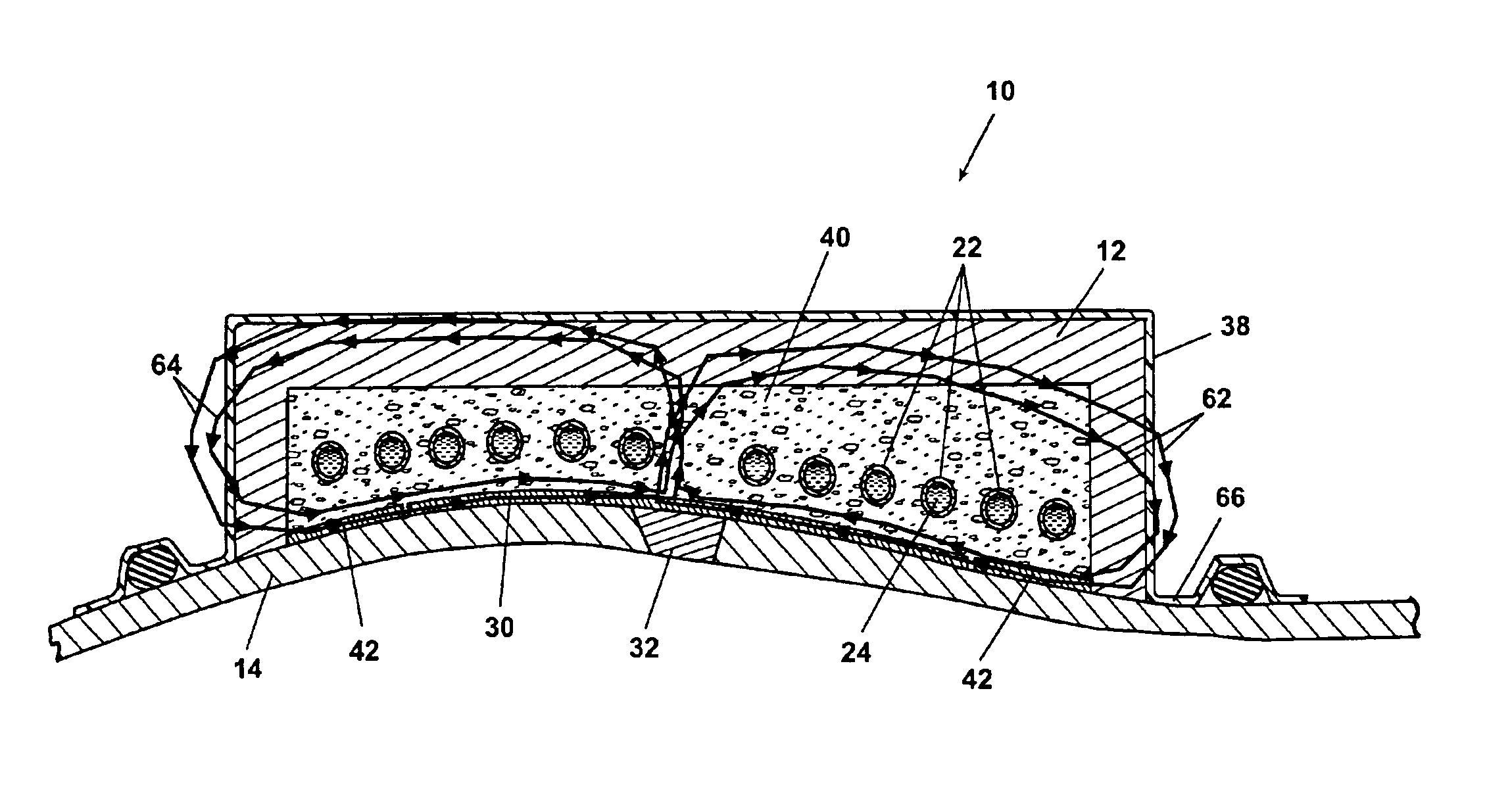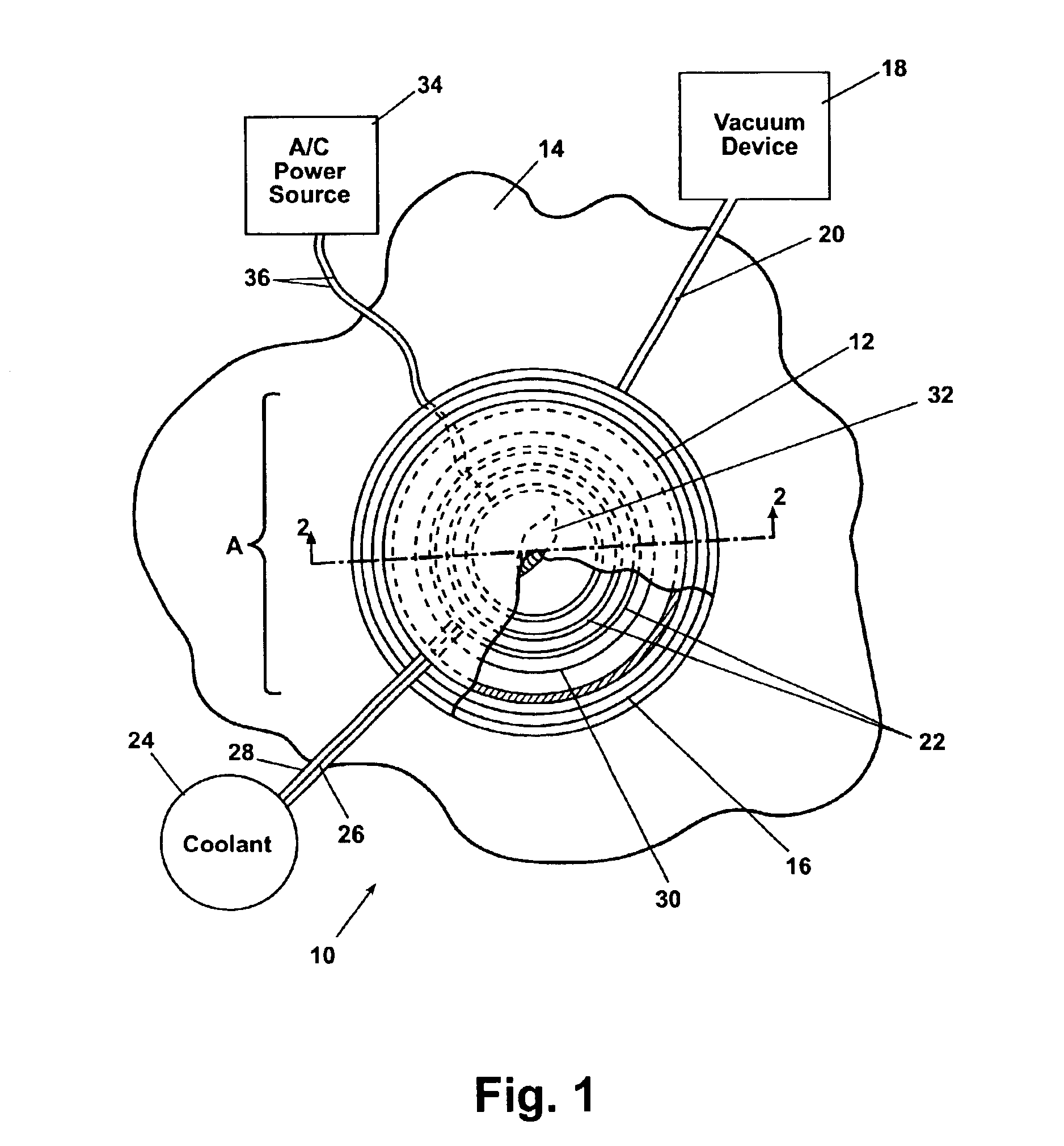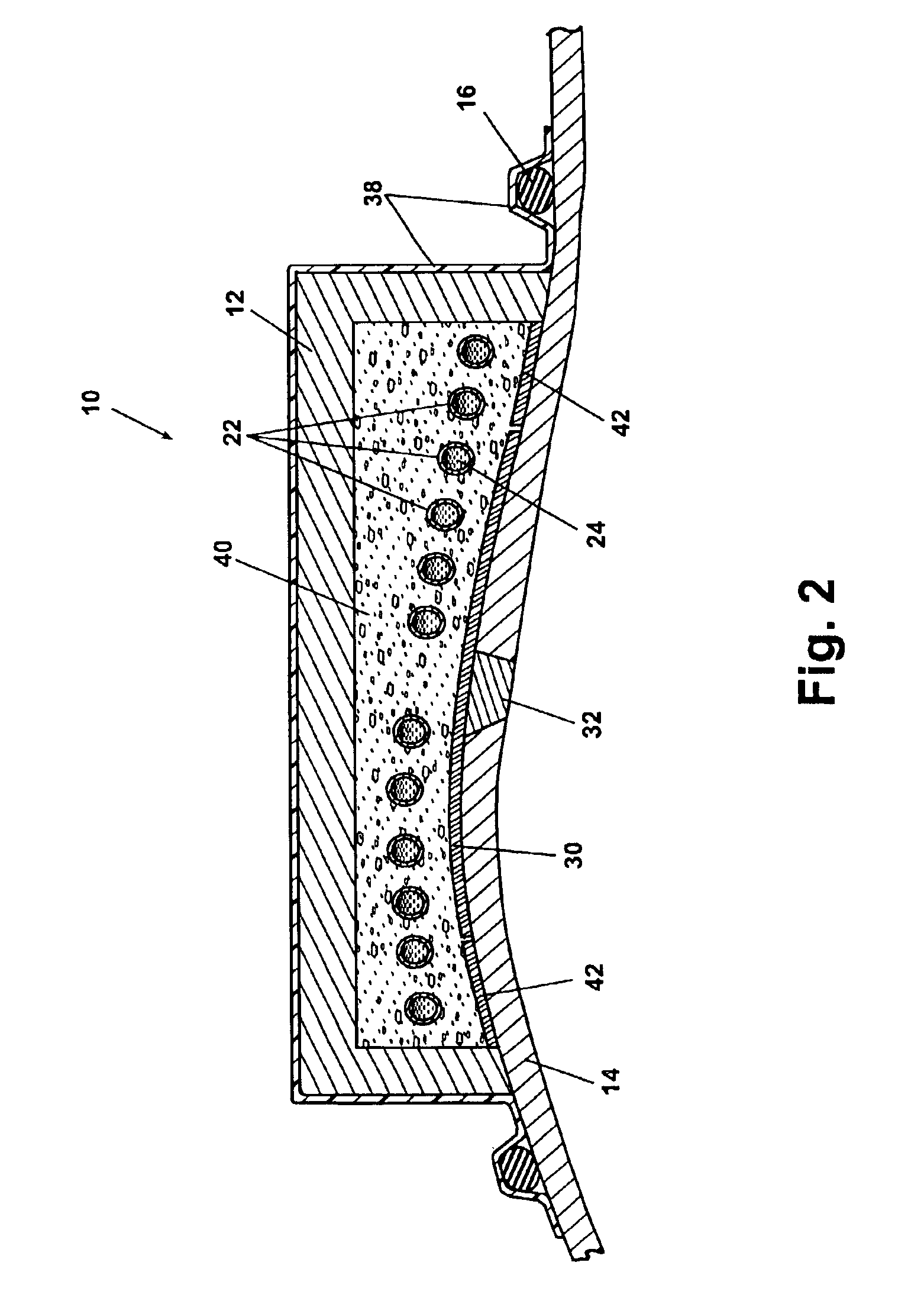Localized stress relief by induction heating
a stress relief and induction heating technology, applied in the field of induction heating, can solve the problems of inefficient conduits, induced current flow with associated resistive losses, heat generation, etc., and achieve the effect of reducing the area of metal plates and high magnetic permeability
- Summary
- Abstract
- Description
- Claims
- Application Information
AI Technical Summary
Benefits of technology
Problems solved by technology
Method used
Image
Examples
Embodiment Construction
[0019]The following description of the preferred embodiment(s) is merely exemplary in nature and is in no way intended to limit the invention, its application, or uses.
[0020]Referring to FIG. 1, an induction heating system 10 according to a preferred embodiment of the present invention is shown. The induction heating system 10 includes a tool body 12 which is temporarily affixed to a weld surface 14. The tool body 12 is held in place on the weld surface 14 at a vacuum seal 16. A vacuum device 18 draws a partial vacuum within the vacuum seal 16 through a vacuum tube 20. A geometrically arranged induction coil 22 is disposed within the tool body 12. A supply of coolant 24 is provided to cool the induction coil 22. The coolant 24 flows within the generally tubular shaped induction coil 22 as will be further described in reference to FIG. 3. The coolant 24 is provided via a coolant supply pipe 26 and returns after cooling the induction coil 22 via a coolant return pipe 28.
[0021]A suscep...
PUM
| Property | Measurement | Unit |
|---|---|---|
| Curie temperature | aaaaa | aaaaa |
| temperatures | aaaaa | aaaaa |
| area | aaaaa | aaaaa |
Abstract
Description
Claims
Application Information
 Login to View More
Login to View More - R&D
- Intellectual Property
- Life Sciences
- Materials
- Tech Scout
- Unparalleled Data Quality
- Higher Quality Content
- 60% Fewer Hallucinations
Browse by: Latest US Patents, China's latest patents, Technical Efficacy Thesaurus, Application Domain, Technology Topic, Popular Technical Reports.
© 2025 PatSnap. All rights reserved.Legal|Privacy policy|Modern Slavery Act Transparency Statement|Sitemap|About US| Contact US: help@patsnap.com



